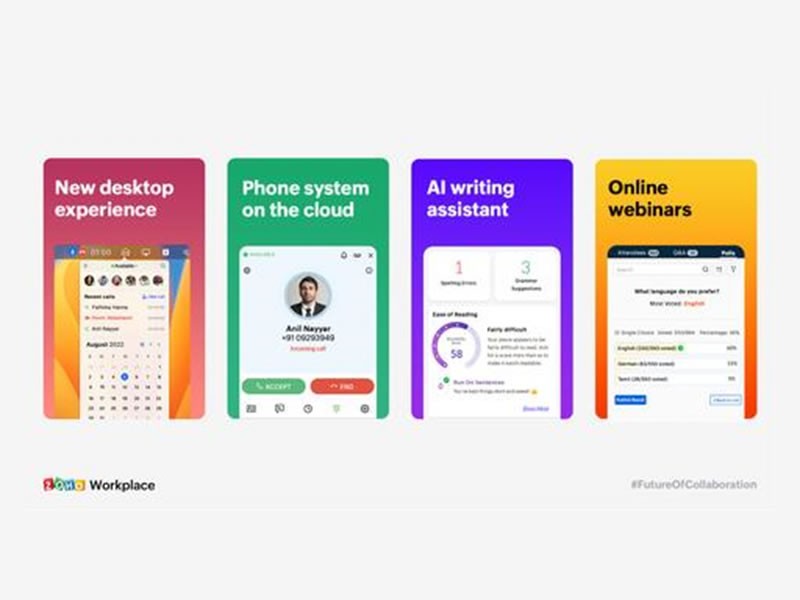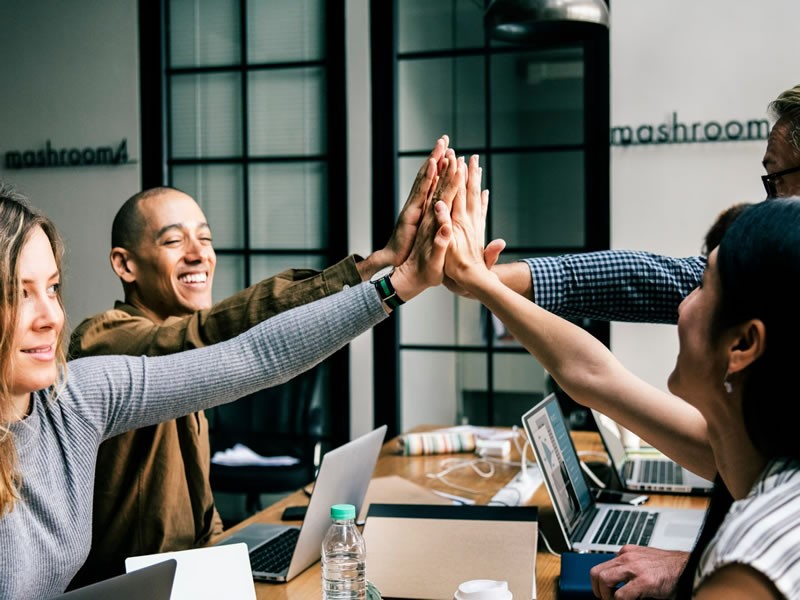Insight Blog
Agility’s perspectives on transforming the employee's experience throughout remote transformation using connected enterprise tools.
7 minutes reading time
(1402 words)
How Do Unified Communications Contribute To Collaboration
Unified communications integrates all systems a user might already use, and helps those systems work together in real time. But how does Unified Communications Contribute To Collaboration?
Unified communications is the term used to describe the use of several different technologies for sharing information, including email and instant messaging.
Unified Communications (UC) is a term used to describe a set of technologies and solutions that are designed to integrate various communication tools and services into a single, cohesive platform. This platform can include a variety of communication channels, such as voice, video, messaging, email, and more, as well as features like presence, chat, and file sharing.
The goal of UC is to streamline communication and collaboration across an organization, making it easier for employees to communicate with each other and with external stakeholders, regardless of their location or device. By unifying communication channels and providing a consistent user experience across all devices, UC can help to increase productivity, reduce costs, and improve customer satisfaction.
Collaboration is one of the main benefits of using UC as it makes it easier for people who work in different offices to collaborate with each other. This means they can share documents and ideas easily without having to physically meet up at each other's desks.
Main Components Of Unified Communications
Unified communications is a new way of working, in which people and devices are connected seamlessly. It's about using technology to make communication easier and more productive for everyone in your company, whether they are in the same room or in different continents.
It is not just about email — but about having one common platform that supports all communication modes (phone, email, IM, voice, or video).
Here are the three main components:
Messaging
Messaging software allows the sending of text messages, emails, and other documents between any two people who have access to the same messaging platform (such as Gmail or Microsoft Outlook).
You can also use it to send short videos or audio files between two people who are logged into their accounts on the authorized device(s).
Collaboration
Collaboration tools enable teams to work together more effectively by sharing documents, whiteboards, and other information in real-time.
These tools can also be used by individuals working alone or in small groups to share content such as presentations or spreadsheets with colleagues who may be far away from them physically but still need access to their project documentation as soon as possible.
Conversations
Conversations are held between two or more people who have had an interaction in the past (e.g., via email).
They can be created manually by users or automatically triggered by applications such as calendar reminders or instant messages.
Conversations are also sometimes known as 'threads' or 'channels', depending on how many participants are involved in the conversation (e.g., one thread per user).
Relationship Between Unified Communications And Collaboration
The concept of unified communication began with the 'grand slam' idea that people need a way to communicate with each other regardless of location.
So, UC refers to the use of a single application, such as Microsoft Office Communicator or Cisco WebEx Meetings, to access different types of communication tools. It allows you to combine voice and video, text chat, screen sharing, and more in one interface.
A few benefits of UC include:
●Better customer service — You can provide faster responses to customers because you're able to respond in real-time.
●More efficient teamwork — Employees can work more effectively as they don't have to wait for each other to finish their tasks. They can also collaborate on projects together by sharing files or documents.
●Improved productivity — Employees will be able to complete tasks more quickly because they can access shared files and documents instantly instead of having to go through multiple steps before submitting them. Some UC tools come integrated with text-to-speech features that enables seamless transition between voice-based communication to text-based alternatives.
Collaboration means sharing ideas, information, or knowledge with others in order to improve performance or achieve goals or work together toward a common goal, usually involving some degree of coordination and informational sharing.
For example, if you're collaborating on a project at work, then it means that everyone involved will contribute their ideas and opinions towards making sure everything goes smoothly during the process.
In a nutshell, unified communication is a term used to describe the various technologies used in the workplace to deliver information between people and devices, while collaboration is an overall process of working together towards a common goal.
UC has the potential to help organizations achieve greater collaboration by providing an integrated platform for communication — including voice, video, and data — at different levels of organizational granularity depending on the type of communication.
With numerous collaboration tools available, choice paralysis can be a real issue to deal with. Unified communications can help bridge the gap between teams by providing them with one unified platform where they can share information and collaborate freely. With numerous collaboration tools available, a standout unified communications solution for businesses in NY and NJ can help bridge the gap between teams by providing them with one platform. Such integration not only steers clear of choice paralysis but streamlines communication, ensuring efficiency and bolstering security measures
It is however worth noting that Unified Communications make it necessary for your team to be adequately trained in multiple communication platforms and protocols. A robust employee onboarding and continuous learning program is thus essential.
How To Improve Collaboration With Unified Communications
Unified communications is the technology set that connects people to each other and to their work. It's about more than just email, phone, and video calls — it's about making sure everyone in your company can reach each other no matter where they are or what they're doing.
Collaboration is a two-way street. It requires both parties to be engaged in a conversation and work together toward a common goal. Using traditional tools such as email and phone calls, it can be difficult to coordinate tasks between team members and keep everyone informed about what's happening in real-time.
This is especially true with respect to customer support resolutions. While most organizations invest in business VoIP services that enable customer communication, they are often inadequate since customers may choose to reach out from more than one communication medium.
Unified communications can help improve collaboration by providing a single channel for communication across multiple devices, ensuring that your employees can stay connected with each other and valuable clients from anywhere and at any time.
Here are some ways that unified communications can help improve collaboration:
Unified Messaging
Unified messaging allows users to communicate with each other across multiple devices without having to switch between different apps or platforms.
This makes it easier for employees to stay in touch with one another and helps them avoid missed calls and voicemails from colleagues.
For example, you can use an instant messaging app like Slack for internal communications - to chat with colleagues who are working remotely or across regions.
Unified Presence
Unified presence allows people who aren't physically present at the same place at the same time but have access to the same device or application — such as Skype for Business — to see each other just as if they were together in person.
This technology also allows users who may be working remotely from separate locations around the world to collaborate on projects together using video conferencing software like Microsoft Teams.
Email Auto-Response
If you're working remotely, email auto-response allows employees to quickly respond to important messages by automatically creating an email message that contains all relevant information in one place.
This makes it easier for employees who are not physically present at the office but still need to get their questions answered quickly when needed.
Final words
Unified communications offers a number of ways in which businesses and corporations can improve communications.
For example, with an open communication system in place, it is easier to stay on schedule for conferences and events, and you can also improve internal efficiency by cutting down on both email volume and the number of staff members needed for making calls.
In general, UC offers businesses and corporations simpler communications, increased employee efficiency, and smoother collaboration between departments.
Categories
Blog
(2590)
Business Management
(318)
Employee Engagement
(204)
Digital Transformation
(172)
Intranets
(119)
Growth
(118)
Remote Work
(61)
Sales
(48)
Collaboration
(37)
Culture
(29)
Project management
(29)
Customer Experience
(26)
Knowledge Management
(21)
Leadership
(20)
Comparisons
(5)
Ready to learn more? 👍
One platform to optimize, manage and track all of your teams. Your new digital workplace is a click away. 🚀
Free for 14 days, no credit card required.

















